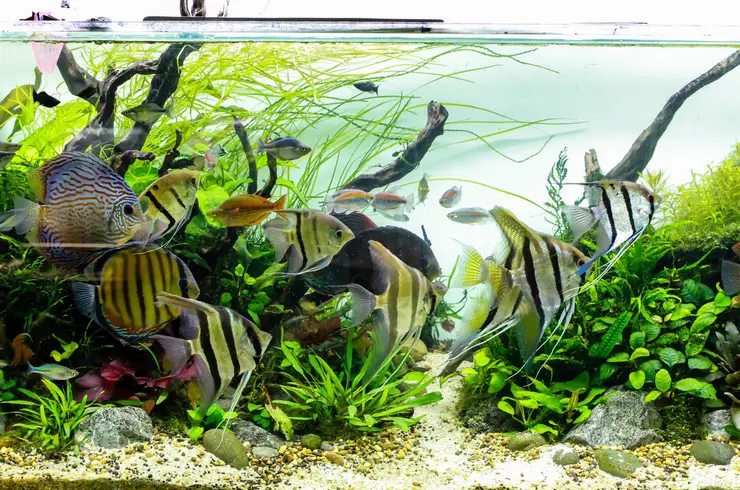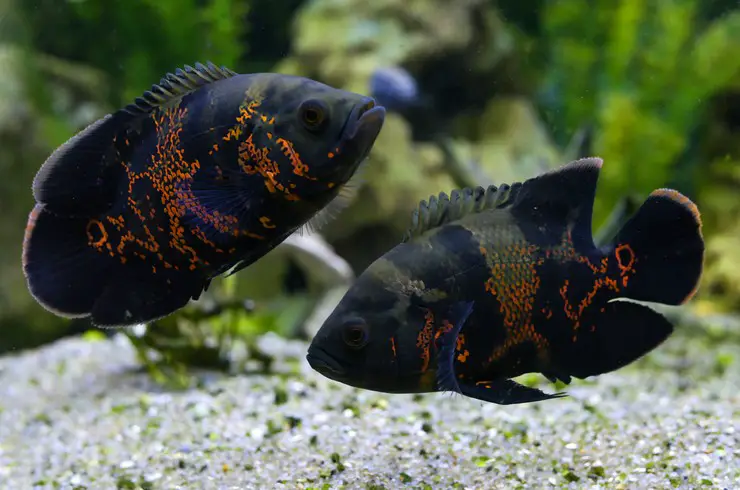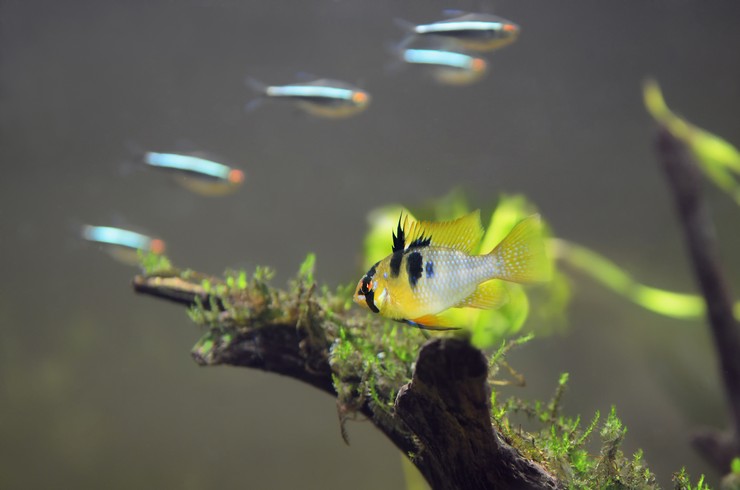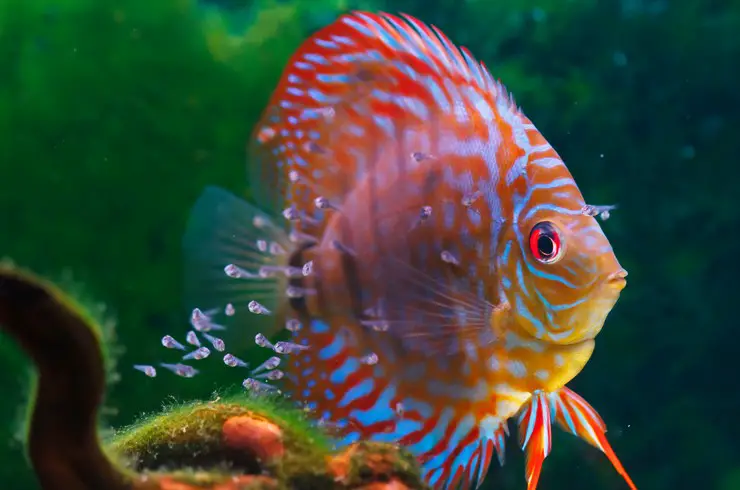Many representatives of American cichlids reach quite large sizes (up to 35 cm), so such fish will need a spacious aquarium. Most species are very beautiful and highly intelligent.
General information
The first representatives of cichlids, which are used in aquarium culture, were some species of South American cichlids. To date, more than 50 genera of American cichlids have been described, which include two large territorial groups – living in South and Central America. In aquariums, it is undesirable to keep members of these groups together, since they differ significantly in behavioral characteristics and prefer different conditions, despite their common geographic origin.
Appearance
The appearance of American cichlids is extremely diverse and depends on the habitat of the fish. For example, scalars and discus fish have a flattened body shape that allows them to swim in dense thickets of aquatic plants. Scalarians with their spreading fins resemble a triangle, but the body of the discus is almost perfectly round. It is quite another matter with active predators, such as akars or astronomies. Their body is dense, with a pointed front edge and a large mouth that allows them to swallow prey.
Among American cichlids, you can find fish of almost any size: these are dwarf cichlids (apistograms), medium-sized fish (Chromis-handsome), and giants (astronomies, Managua cichlazomas).
The color of natural species is quite diverse, and the number of color variations obtained by breeders is even greater.
Habitat
The main habitat of South American cichlids is the Amazon River and its many tributaries. They prefer small rivers and channels crossing tropical rainforests. The bottom of such reservoirs is strewn with a large layer of fallen vegetation, leaves and fruits of trees, various snags and branches. This organic matter constantly decomposes and releases tannins into the water, because of this it acquires the color of “strong tea”.
Cichlids from Central America live in small rivers, as well as in lakes and swamps. They are often found in places where rivers flow into the ocean. The water in such places is mixed and becomes partially salty. Many species have adapted to living in brackish water. American cichlids live in various bodies of water: it can be both calm backwaters with dense vegetation, and turbulent mountain streams.
Care and maintenance
A large number of species of American cichlids and the wide geographic range of the range lead to the fact that the conditions for keeping fish are extremely diverse.
The volume of the aquarium must be selected depending on the size of the fish and the number of planned individuals, it can range from 30 to 500 liters and more. Ensure good filtration and aeration in the aquarium. For many species, it will be helpful to create a black water effect with the Tetra ToruMin conditioner.
All cichlids are thermophilic; a comfortable temperature for keeping most species will be 23-25 °. Discus requires water heating up to 30-32 ° С. At lower temperatures, fish will feel uncomfortable.
The cichlids of South America prefer soft and slightly acidic water. The presence of living vegetation will also have a positive effect, primarily for dwarf species. Large representatives can bite and pluck plants.
The common property of all cichlids is territoriality. Some species show it regularly, while others only during spawning. Therefore, it is very important to provide a large number of natural hiding places in the aquarium so that weaker individuals can hide from attack.
Compatibility
Among the huge number of species of South American cichlids, there are both quite peaceful individuals, perfectly suitable for keeping in a common aquarium, and extremely aggressive predators, which would be better kept separately in a species aquarium.
The first group includes such popular fish as apistograms, scalars, discus. Except for the latter, they will make excellent neighbors for other calm fish species. Discus’ compatibility with other fish is limited by special conditions of detention.
The second group includes large species with a high level of aggression, for example, Astronotus and Acars. These fish are able to grow up to 25-30 cm. And if young individuals are launched in small flocks of 4-5 pieces, then it is necessary to keep adults only in pairs. It is very difficult to find someone who is not attacked by these large cichlids. But if such a desire nevertheless appeared, then it is necessary to significantly increase the volume of the aquarium, arrange a large number of shelters and select proportionate species.
Reproduction and breeding
Reproduction of most species of South American cichlids is not difficult. Often, spontaneous spawning can occur even in a shared aquarium.
Gender dimorphism is not expressed in all species; outwardly, it is difficult to distinguish a male from a female. Puberty in most species occurs around the age of one year. When breeding, a separate spawning aquarium is created in which the necessary conditions must be created. In the event that species are bred that prefer to lay eggs on plants, it will be useful to place an echinodorus bush or other hard-leaved plant in the aquarium. Some species spawn in a pre-dug hole under the protection of some kind of shelter.
All types of cichlids in South America are characterized by pronounced care for the offspring. First, both parents guard the caviar, and a constant current of water is created over it due to the movement of the pectoral fins. Dead eggs are removed. After the hatching of fry, the male and the female protect the offspring from being eaten by other fish.
